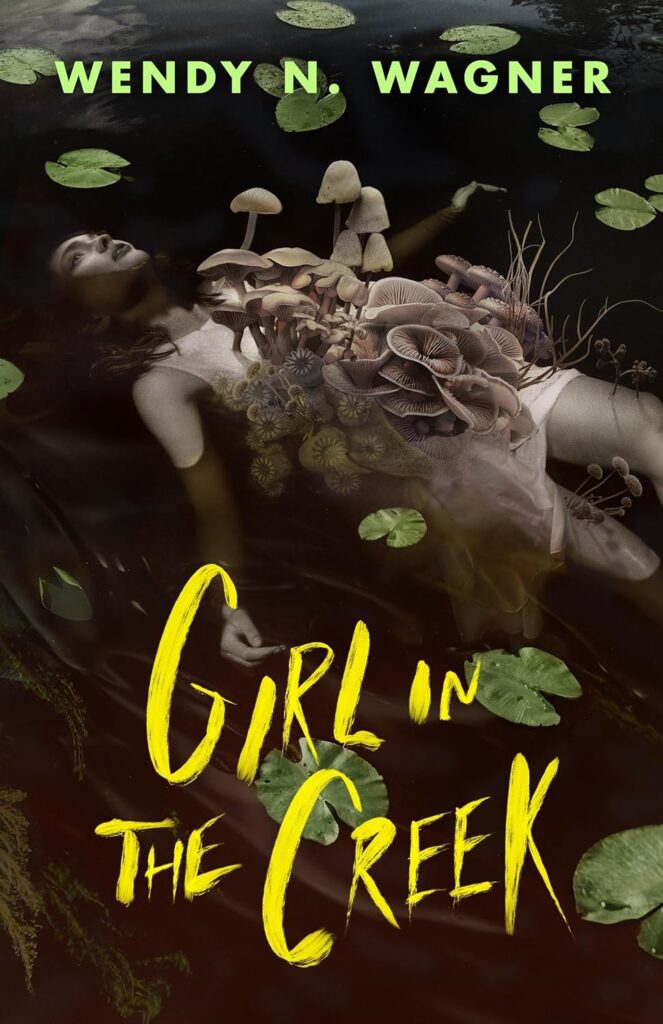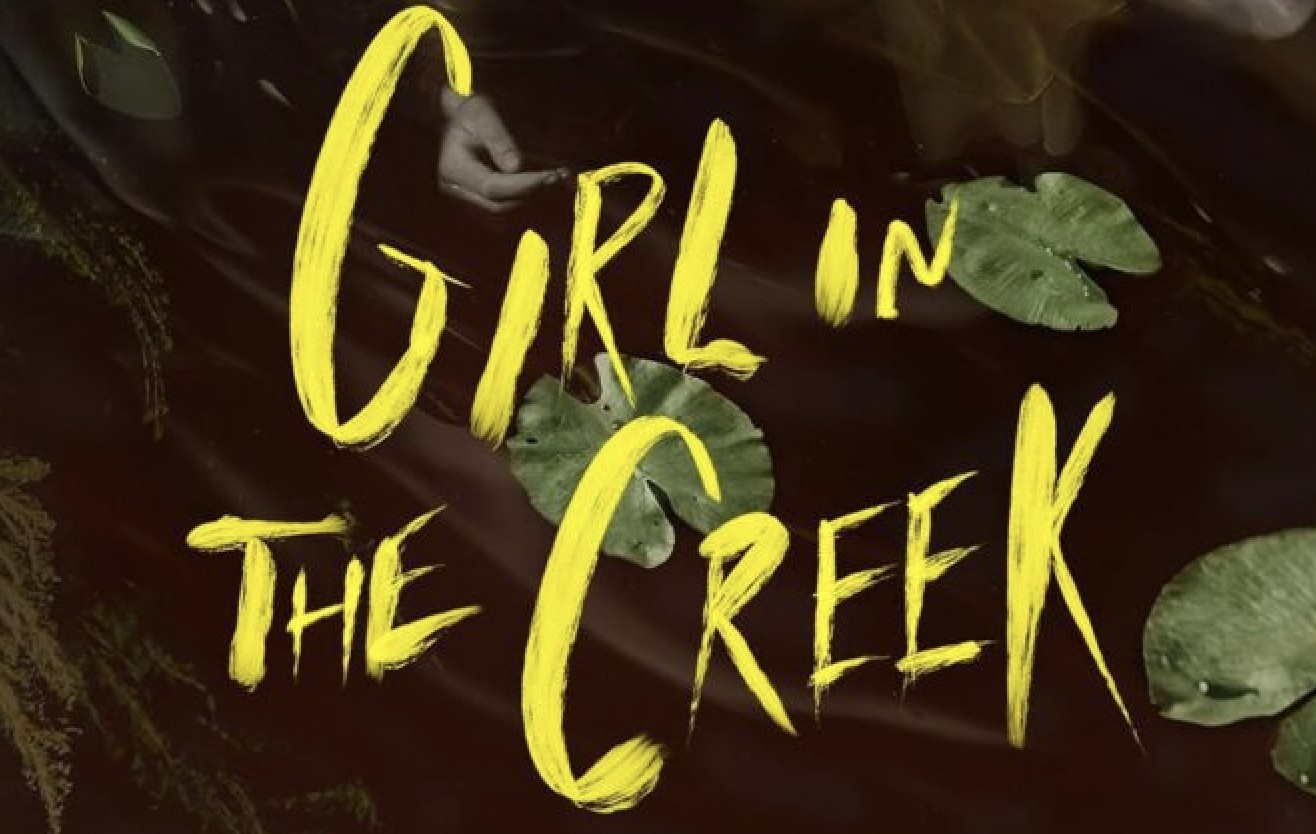 Wendy N. Wagner, author of the new novel Girl in the Creek. Photo: John Kaczanowski
Wendy N. Wagner, author of the new novel Girl in the Creek. Photo: John Kaczanowski
“The body lay at the very limit of daylight, the last clear place on the stones before the wood framing in the ancient adit began to peel away from the walls and pile up in moldy heaps.”
— Wendy N. Wagner, Girl in the Creek
***
Thus begins Oregon horror author Wendy N. Wagner’s new novel, Girl in the Creek, a true crime/climate horror phantasmagoria that is generating a ton of buzz leading up to its July 15 release. The Library Journal has already called it a “tightly written master class in horror.” This is Horror.com said, “Combining true crime with gruesome eco-horror, Wagner’s latest is destined to be one of the must-read horror novels of summer.” And Wagner is drawing comparisons to T. Kingfisher (What Moves the Dead) and Jeff VanderMeer (Annihilation).

Which is all heady stuff for Wagner, though this is by no means her first rodeo. Girl in the Creek is her fifth novel, following 2021’s The Deer Kings, 2018’s An Oath of Dogs, and two Pathfinder tie-ins, Starspawn and Skinwalkers. The Washington Post named Wagner’s novella The Secret Skin one of the Year’s Best Science Fiction, Horror and Fantasy books of 2021, and Locus named the novella to its Recommended Reading List. Oh, and Wagner has had sixty-plus short stories published across the spectrum of speculative fiction.
So, that’s a lot, right? But wait, there’s more. Wagner doesn’t just write like a runaway freight train; she helps other writers get to where they need to, as well. She’s an editor on Lightspeed magazine; and as editor-in-chief of Nightmare Magazine, she has been nominated for Editor of the Year twice, including this past June. She didn’t win either time, but two nominations in a three-year period indicates she must be doing something right.
Then there are Wagner’s essays and articles and poems published in various outlets around the country and interwebs. With nearly a hundred published works in circulation one way or another, it’s not unfair to suggest that Wagner is prolific. And when you’re writing that much and getting published that much, and building up the street cred she has over the past two decades, is it too much to think that Wendy Wagner might be on the verge of a breakthrough?
Sponsor
Wagner, an Oregon native, hails from the small town of Ash Valley. “Small” doesn’t quite cover it: When Wagner was growing up there, the population of the entire community was sixty-two. Sixty. Two. No post office. Next to no television reception. Kids her own age were few and far between, literally. “Most of the time,” Wagner remembers, “I was the only kid in my whole class.” Her father was a logger. Her mother worked at the local resort. It was Wagner’s mom who engendered her love of speculative literature. “My mom,” she says, “loved science fiction. She owned every book by Frank Herbert.”
 The cover of Girl in the Creek, which is being released July 15.
The cover of Girl in the Creek, which is being released July 15.
As a child in a town with no television, Wagner used to wait impatiently for the bookmobile that came out to Ash Valley every two weeks. “We’d get out of school to go to the bookmobile, and I would be in there for an hour picking out books. I would get anything and everything. One year, there was a really popular run of modern Nancy Drew and Hardy Boys books, and they were very skinny, but I checked out a hundred and twenty-five of them and I read them all in two weeks.”
Wagner discovered horror during her formative years in a way not too dissimilar from how horror fans all over the world have discovered the genre: namely, by reading or watching material that wasn’t necessarily appropriate for her virgin eyes.
“I found Stephen King when I was seven or eight,” she says. “My sister checked out the book Skeleton Crew, a short story collection, and there was a story in there called The Raft. I remember her telling my mom, ‘This is the scariest thing I’ve ever read!’ And I was like, ‘I feel like I’m not supposed to read this – but I’m gonna — cuz I gotta see what’s so scary!’ And then, of course, I’m like, ‘I love this!’ That opened the doors.”
Not to say that there weren’t any children’s authors who had a significant impact on Wagner’s literary development. “Susan Cooper, who had a series that took Welsh and English folklore and recasts it in modern times, was hugely influential,” says Wagner. Tamora Pierce was another writer who was very important to me. She wrote really feminist stories about a girl who was going to be a knight.”
Those books, The Song of the Lioness series, had a profound impact on Wagner in ways that would manifest themselves both immediately and much later in her career: “That was the first book I ever read that was in multiple POVs. I was like, ‘Woah! What the heck? A story can be told from more than one person in one book? That’s so weird.’ That made me think about how books get written, and I thought, ‘Maybe I want to be a writer when I grow up.’”
Two other great influences on Wagner were Octavia E. Butler and her mother’s great literary love, Frank Herbert. “Octavia Butler’s books started coming out in the late eighties and early nineties, right at a time when I was really looking for stuff that was a little bit deeper, and she and Frank Herbert were mind-opening stuff,” Wagner says. “It was science-fiction but it was about how social stuff happens. It was so much cooler than like, robots in space. It was, ‘Wow! People! In the future! Yeah, this is what this should be about.”
Sponsor
Decades later you can see all of these influences manifest themselves in Girl in the Creek, a book that the publisher Tor Nightfire describes as “a tense, cli-fi cosmic horror novel set in a rural Oregon forest that seems to consume any who enter.”
Creek is some five years in the making, from inception to writing to publishing. “This one took me longer than my other books because I had the idea for this character, and I had a vision for some of the things that would happen, but I didn’t have a plot for a long time. I wrote probably eighty or a hundred pages, and I thought, ‘This is not working.’ I had to throw it away.”
If a hundred pages sounds like a lot of work to be thrown away, Wagner agrees, but is also clear that it was necessary. “When you have that realization,” she acknowledges, “it feels good to just push delete.” That process took her from the fall of 2020 to first part of 2021. There was another version, this time in first person, that she also didn’t like and then threw away. Finally,she spent the whole last half of 2021 writing the book in its current form.
“The way [Girl in the Creek] is structured, there are two points of view,” says Wagner: “a woman who writes true crime, and she’s writing about missing people in the Mount Hood National Forest where her brother went missing five years earlier. The other character is this fungi-ly networked hive mind character called the Strangeness. It’s made up of a lot of different beings, like animals and people and plants. That was challenging. I tried to really get in the head of each character.”
To develop that section of the book, Wagner turned to her short fiction: “When I’m between novels a lot of what I want to do with short fiction is to do more experimental work or try an aspect of the craft I haven’t tried for a long time, something that’s new, or helps me work out a problem.
“When I was writing Girl in the Creek, I wrote out all the human stuff and I knew I wanted to write the other point-of-view characters, these different creatures and people who are messed up with this weird fungus thing, but I need to practice because it’s going to take a much stronger craft to write that than a fun adventure story, which the other part is.
“I wanted the opening character to be this mother coyote. So, I decided to write a story that’s from the point of view of a dog that has a chip in its brain so it can understand human language and think human language thoughts but still be really a dog.”
Sponsor
That idea turned into Wagner’s short story Infestation of Blue, which wound up being published by Analog, nominated for the Theodore Sturgeon award, and named to Nebula’s Recommended Reading list. “That story,” says Wagner, “was really good practice to level up my craft.”
In Girl in the Creek, the true crime writer is on a research trip in the Mount Hood National Forest. “[She’s] out in the woods,” says Wagner, “and finds the body of a dead girl in a creek. The dead girl’s body has mushrooms on it that not even the local mycologist can recognize. Then she goes missing from the morgue and her fingerprints are found at the scene of a crime — that happened after she died.”
How does the editor-in-chief at Nightmare Magazine, and editor on the staff at Lightspeed, scribe of dozens of short stories, poems, essays and articles, carve out the time to write a novel? “I’m the master of my schedule, which can be its own danger,” says Wagner. “I make a strict schedule where I do my writing work in the morning. My creative brain works best in the morning, and then in the afternoon I do the editorial work like a regular workday.”
That schedule has been tough to maintain in the past few weeks as Wagner has been focused on promoting Girl in the Creek and preparing for her upcoming book tour, which will take her through seven cities in ten days, from Portland all the way to Philadelphia and back again.
The tour, her first, is already exciting. “Not everybody gets to go on a book tour,” Wagner says with a laugh. “I was expecting that I would be calling up some bookstores in the Pacific Northwest. Then I get this email from Tor and they’re like, ‘Well, here are these bookstores that have reached out to us that would like you to come.’ And I’m like, ‘These are not in the Pacific Northwest! Holy Moley!’ It was amazing.”
That unironic use of ‘Holy Moley!’ is indicative of how Wagner comes across in person: funny, forthright, passionate about her craft, and without a trace of cynicism. “I would say that ninety percent of all horror writers are like this,” she laughs. “You go to a horror convention and everybody’s wearing all black, but man, are they the most cheerful, cuddly people.”
Which is not to say that her horror doesn’t come from a deeply personal, intense place. It does.
Sponsor
“I talk to a lot of people who are horror creators,” she says. “Many of us have these backstories of being extremely fearful as young people or having a lot of terrible things happen to us when we were younger or came from hard family situations. When I was a kid, I fit into all those columns. I was a constantly frightened little person. Horror started out as this exercise of, ‘can I make myself braver?’ Then it became a tool in my life for dealing with fear. I like to think that I can take the things that have been hurtful and scary that I’ve experienced, and I can turn it into something nourishing. It can be a healthy meal for somebody else’s soul.”
This greater purpose of horror is the engine that drives much of Wagner’s work both as a writer and an editor, and in her opinion, that not enough people talk about.
“We have this idea that horror is just supposed to be scary,” she says. “But I think the horror genre can do so, so much more. It’s this amazing place where you can really wrestle with the dark side of the human condition, whether that’s depression and despair or being frightened, or coping with trauma. You can play around with being angry, violent, scared, whatever, and then you can come out of that and you’re you again, but you have a new handle on the bad things in the world. That’s why our motto at Nightmare is, ‘Horror is for everyone.’”
The other key tenet of Wagner’s work is Nature. “In all my books; even in the fantasy novels that were set in the Pathfinder world, I picked the landscape from their choices that was the most like Oregon. This one is set in the Mount Hood National Forest. Being in nature is important to me. Our relationship to our landscape is super important to me. I write about that, but through the lens of speculative fiction.”
Now, with Girl in the Creek coming out on July 15, positive vibes already flowing in from all over the speculative fiction landscape, and a book tour beckoning, it’s hard not to feel that Wendy Wagner is about to take another big step. Be that as it may, she is clear about where her focus should be. “I try to keep my eye on getting better at writing,” she says. “I want each book to be different. I want each book to be more powerful. I want to get better and better at telling these stories and impacting people.”
***
Girl in the Creek is set to be released on July 15 and is published by the speculative publishing house, Tor Nightfire, an imprint of Tor.com.
Sponsor



